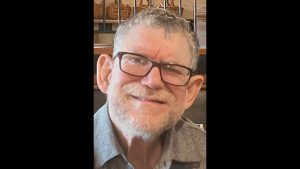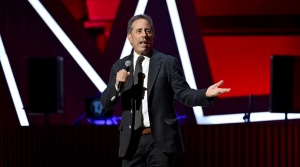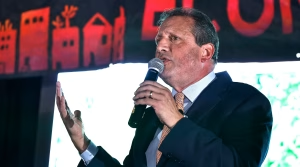How area rabbis discovered their passion for religious leadership: Online Exclusive
Published February 11, 2016
We all know our rabbis by their name, by their looks, by their voice. We know our rabbis by their sermons, the lessons they teach us each and every week. They offer us advice, talk with us, cry with us, laugh with us. They help us understand God’s Torah and support us through every endeavor we take as we write our own stories. They too, have a story to tell. We may not know their past, or how they came to be rabbis, but it’s never too late to ask, and to listen to their Jewish journeys.
Rabbi Rose: Bnai Amoona
Growing up in Winnipeg, Canada, Rabbi Carnie Rose’s youth was immersed in Judaism. There were many synagogues, Jewish day schools, a Jewish community center, and cultural events surrounding him. Many people spoke Yiddish, and so Jewish newspapers were distributed in English, Hebrew and Yiddish. The Jewish community was very diverse, with Sephardic Jews, as well as Jews from the former Soviet Union, making Winnipeg their home.
ADVERTISEMENT
Rose was greatly influenced by multiple rabbis in his immediate family, especially by his father, and decided to become a rabbi when he was in kindergarten. Rose eventually left Winnipeg to study rabanut at the Jewish Theological Seminary in New York. It wasn’t until age 25 that Rose decided to become a congregational rabbi.
“I love working with people,” Rose said. “My dad always says that the world is changed ‘Yidel by Yidel’ – one Jew at a time!”
Rabbi Goldstein: Shaare Emeth
Growing up, Rabbi Andrea Goldstein always felt a deep connection to God. She loved celebrating Shabbat on Friday evenings and going to services on Saturdays with her grandparents.
“These experiences established within me a foundation of comfort and joy being in the synagogue,” Goldstein said.
When Goldstein became a Bat Mitzvah at Shaare Emeth, Rabbi Stiffman told her that she would make a wonderful rabbi someday.
ADVERTISEMENT
“From that moment, I thought on and off about the possibility of one day becoming a rabbi,” Goldstein said.
Goldstein spent her high school years in Boston, where she was very active in her temple’s youth group. In fact, she served as Religious and Cultural Vice-President for three years and spent much of her time writing and leading creative services. During college, Goldstein decided to apply to Hebrew Union College, where she studied one year in Jerusalem and four years in Cincinnati, Ohio.
“I think the thing I like most is officiating at lifecycle events,” Goldstein said. “Being able to help a family celebrate or mourn– and mark the holiness in each of those moments– is something I cherish.”
Rabbi Shafner: Bais Abraham
Rabbi Hyim Shafner grew up in a small town in Connecticut where he was one of the only orthodox Jews. He left home as a teenager to attend Milton Eisner yeshiva high school in Pennsylvania.
“I was always kind of a rabbi to people [in my hometown] since most people in the town had much less Jewish education than I,” Shafner said. “But I never thought of being a rabbi. I always saw rabbis as very holy and did not think I could be that.”
In his senior year at Yeshiva University, Shafner was still unsure of which career he would pursue. But he knew people in YU’s rabbinical school and he could relate to them.
“I think that made it more real for me,” Shafner said. “I realized that being a rabbi brought together a lot of what I liked to do; I liked to talk about God and why we are all here in the universe.”
Shafner received semicha (rabbinical ordination) at Yeshiva University and also trained to be a psychotherapist. He currently practices psychotherapy in addition to being a rabbi. Shafner likes all the ways he is able to help and guide the Jewish people through his job.
“I believe that deep, serious, traditional, Judaism and the practice of mitzvot, and the study of Torah, and Jewish spirituality, can speak deeply to all Jews if we create an environment that is open and welcoming enough, with no barriers to entry.”















